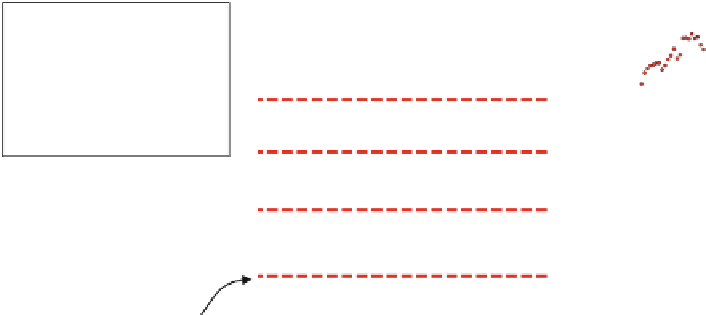Geoscience Reference
In-Depth Information
Fig. 2.27
Figure
2.26
converted to greyscale (
left
), and pixelated (
right
)
Pixel row 13
Pixel row 33
g
g
lag
lag
Pixel row 43
g
g
lag
lag
Pixel row 23
Fig. 2.28
Semivariograms for pixel pairs on selected E-W transects
then apply this average over a wide area. Using
sparse well data as a starting point this is a big
assumption, and its validity depends on the
architectural concept we have for the reservoir.
The concept is not a statistical measure;
hence the need to make an intuitive connection
between the reservoir concept and the
geostatistical tools we use to generate reservoir
heterogeneity.
The intuitive leap in geostatistical reservoir
modelling is therefore to repeat this exercise for
an analogue of the reservoir being modelled and
use the resulting variogram to guide the
geostatistical model,
assuming
it is concluded
that the application of an average variogram
model is valid. The basic steps are as follows:
1. Select (or imagine) an outcrop analogue;
2. Choose the rock model elements which appro-
priately characterise the reservoir
3. Sketch their spatial distribution (the architec-
tural concept sketch) or find a suitable ana-
logue dataset;
















































































